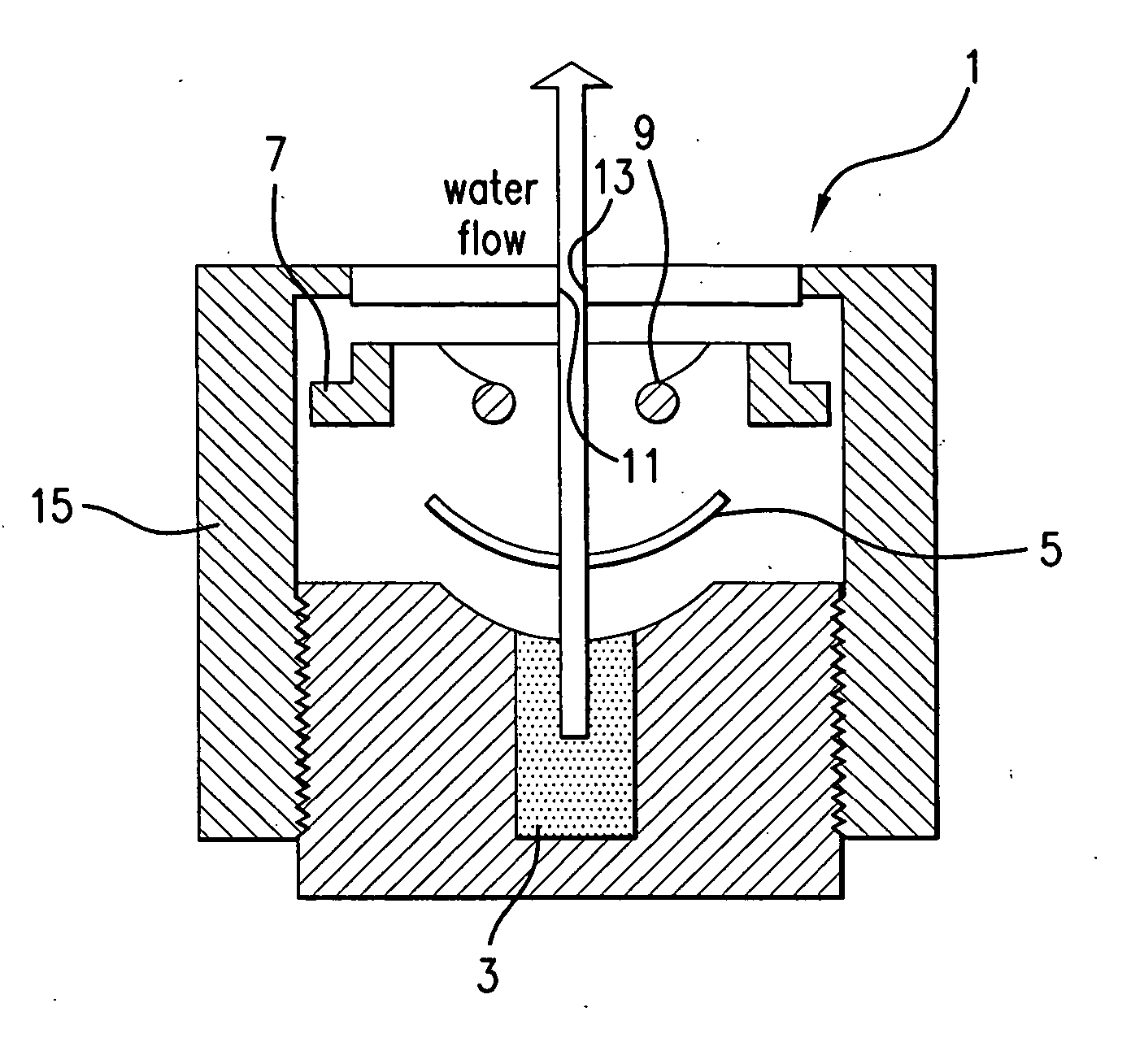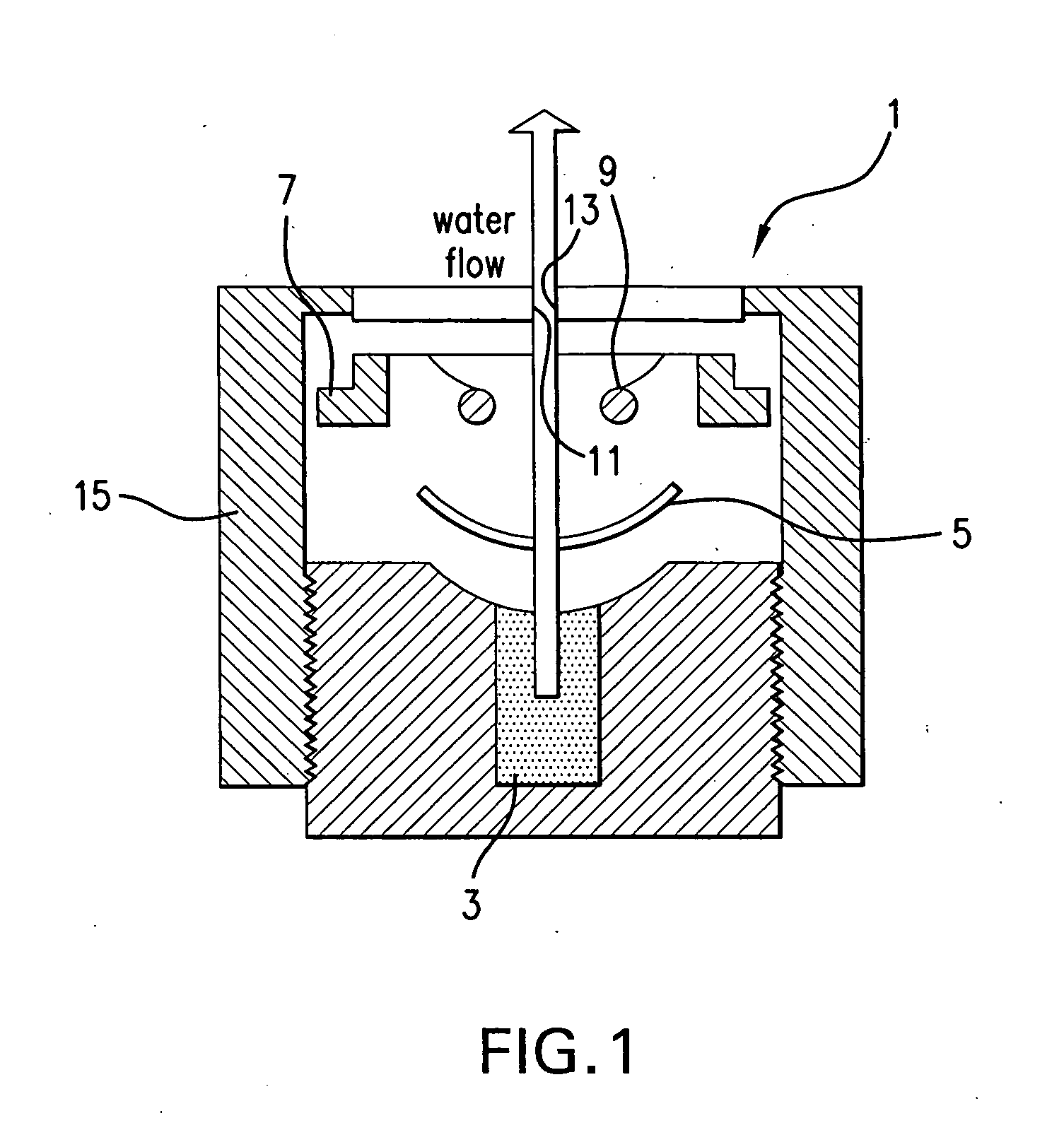Contact lens
a contact lens and polymer material technology, applied in the field of contact lenses, can solve the problems of rgp lenses being typically quite uncomfortable for consumers, unable to safely and comfortably wear these poly(hema) lenses for extended periods, and oxygen cannot easily circumvent the lens
- Summary
- Abstract
- Description
- Claims
- Application Information
AI Technical Summary
Benefits of technology
Problems solved by technology
Method used
Image
Examples
examples
[0138] The following examples illustrate the invention and permit one of ordinary skill in the art to practice the invention. The following tables delineate polymer formulations and resultant properties of contact lenses made according to several embodiments of the invention.
[0139] All monomers were purchased from Gelest, Inc., (Tullytown, Pa.), except where noted. MD9 (lot 86-6126, MW=1000) and MD63 (lot 95H-1068, MW=5000) are monomethacryloxypropyl-terminated polydimethylsiloxanes. M2D63 is a methacryloxy propyl end-blocked dimethyl silicone fluid (#GP-478, Genesee Polymer Corp, Flint Mich., MW=5 kD). M2K2 is 1,3-bis(3-methacryloxypropyl)tetrakis(trimethylsiloxy)disiloxane (SIB 1400.0, MW=683.25). M2D2 is 1,3-bis(3-methacryloxypropyl)-tetramethyldisiloxane (SIB 1402.0, MW=386.64). T-1 is methacryloxypropyltris(trimethylsiloxy) silane (MW=422.82, lot 98-6898). 2,4,6-Trimethylstyrene (TMS), dimethylacrylamide (DMA), 2-N-morpholinoethyl methacrylate (MEM) and octyl methacrylate (OMA...
examples 0-17
Contact Lenses
[0159] Table 2 shows the composition of a base lens formulation. Unless noted otherwise, all formulation / composition units are in grams-mass. This lens formulation includes a silicone-containing monomer, T1, a hydrophilic monomer, DMA, small amounts of a styrene-containing monomer, TMS, and a cross-linker EGDMA. But this formulation does not contain a fluorinated hydrophobic monomer. Although this lens formulation exhibits relatively adequate levels of oxygen permeability, it has a low water content measured as a weight percent of the total weight of the hydrated lens. Also, this lens exhibits adhesion to a human cornea that makes it unsuited for prolonged wear.
[0160] Examples 1, 2 and 3 demonstrate that the incorporation of a fluorinated monomer, containing 3 to about 20 fluorine atoms per monomer molecule unexpectedly increases the water content of the lens without significant reduction in oxygen permeability. These lenses are believed to not adhere to the human co...
example 18-22
Replacement of Long Chain Polyfluorinated Monomer With Various Monomers
[0163] A study was conducted in which the long chain polyfluorinated monomer, FX-13, was replaced on an equal weight basis (9.4 weight percent) in a composition of Example 4, Table 3 by shorter chain polyfluorinated monomers and other monomers, while maintaining the T1 / DMA ratio at about 1. The results of this study are shown in Table 5, below, as to percent water on equilibrium hydration and O2 permeability (Dk) value.
TABLE 5Modified Base Lens CompositionsExampleWaterNumberMonomer*ContentO2 Dk4FX-1341.563.0 ± 2.018TEM43.247.4 ± 6.319DFHA41.051.3 ± 2.720MMA43.545.9 ± 2.021TBS40.050.3 ± 1.422PFS40.068.3 ± 2.9
*TEM = Trifluoroethyl methacrylate, DFHA = Dodecafluoroheptyl acrylate, MMA = Methyl methacrylate, TBS = t-Butylstyrene, PFS = Pentafluorostyrene.
[0164] As seen from the data, use of each of the monomers provided similar water contents. The use of the fluorinated monomers, particularly those with 5 to 20 f...
PUM
| Property | Measurement | Unit |
|---|---|---|
| concentrations | aaaaa | aaaaa |
| temperature | aaaaa | aaaaa |
| temperature | aaaaa | aaaaa |
Abstract
Description
Claims
Application Information
 Login to View More
Login to View More - R&D
- Intellectual Property
- Life Sciences
- Materials
- Tech Scout
- Unparalleled Data Quality
- Higher Quality Content
- 60% Fewer Hallucinations
Browse by: Latest US Patents, China's latest patents, Technical Efficacy Thesaurus, Application Domain, Technology Topic, Popular Technical Reports.
© 2025 PatSnap. All rights reserved.Legal|Privacy policy|Modern Slavery Act Transparency Statement|Sitemap|About US| Contact US: help@patsnap.com



